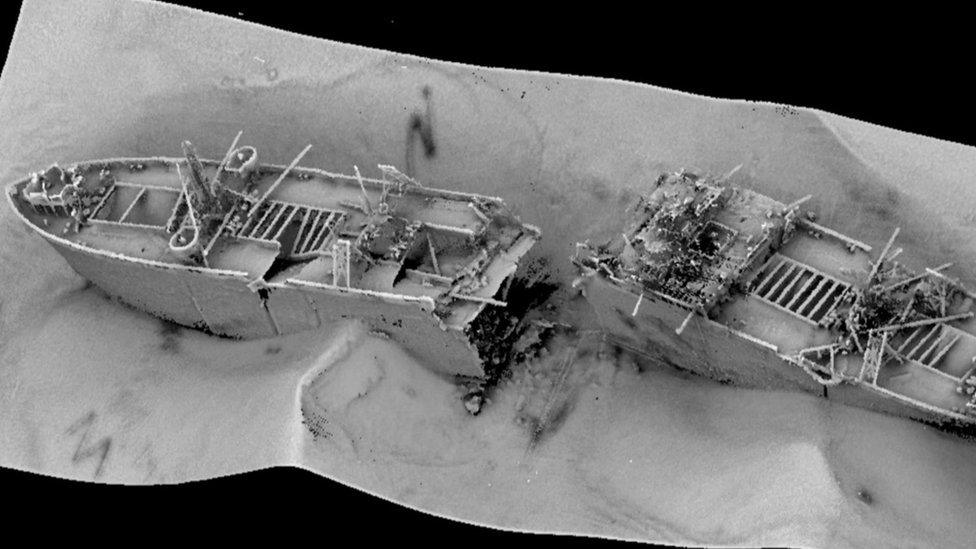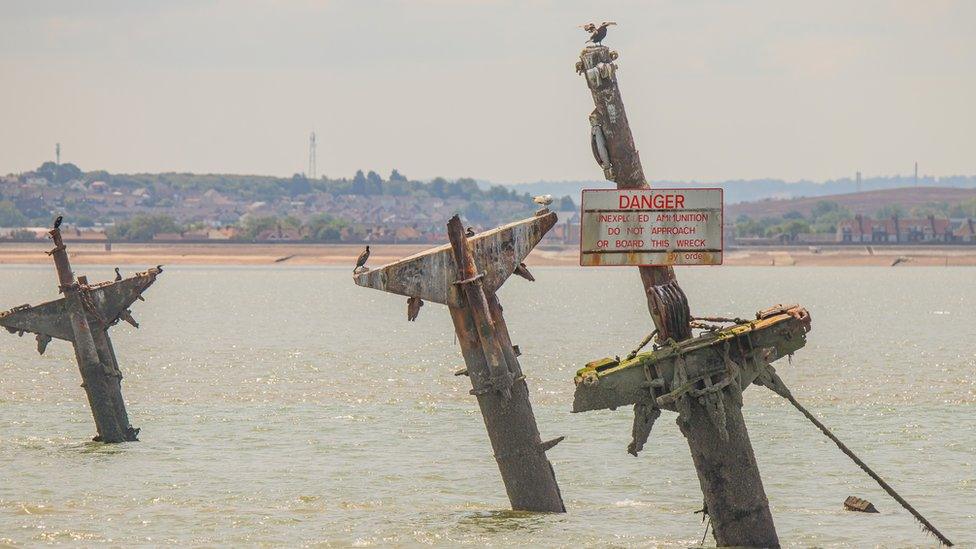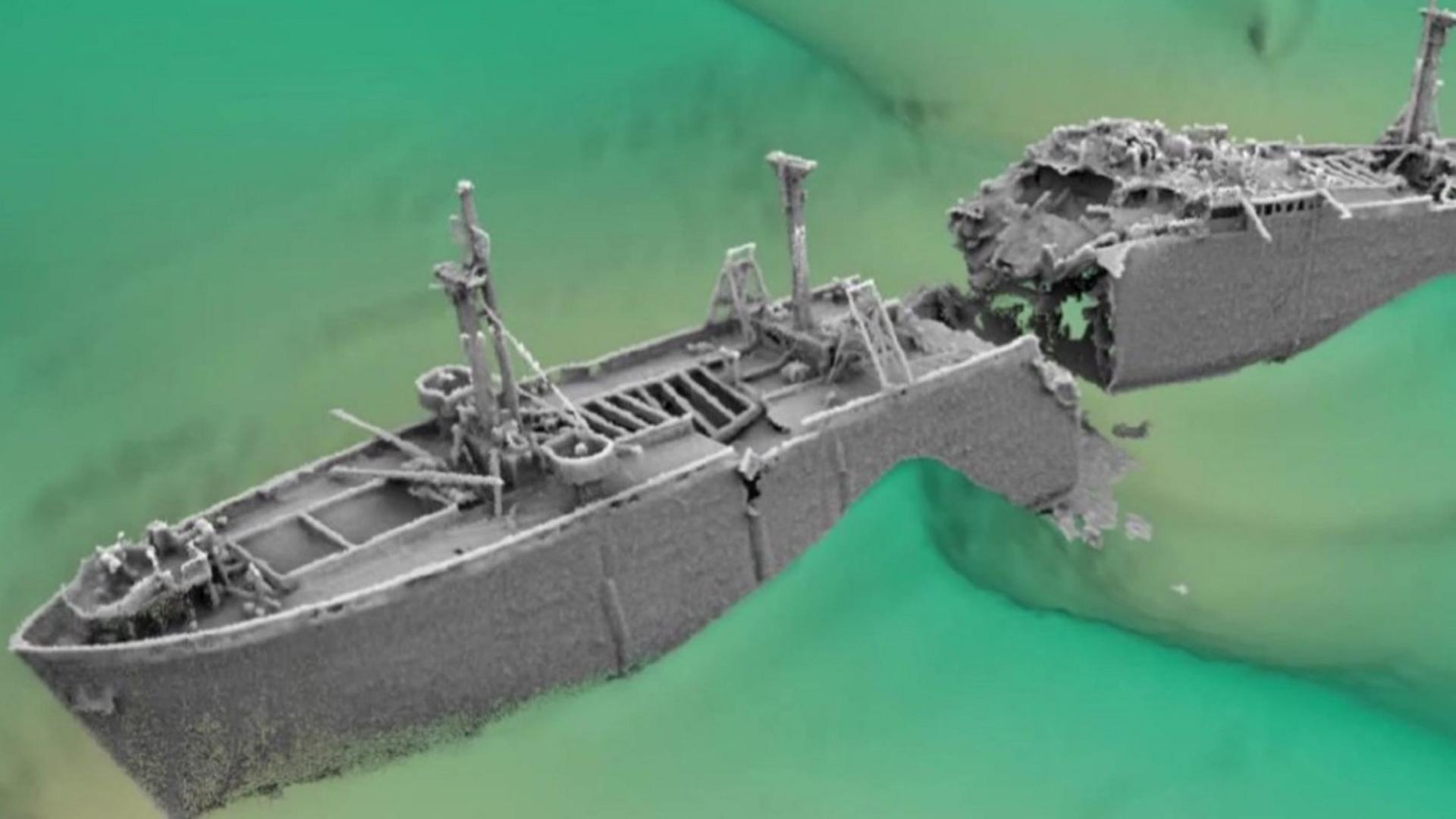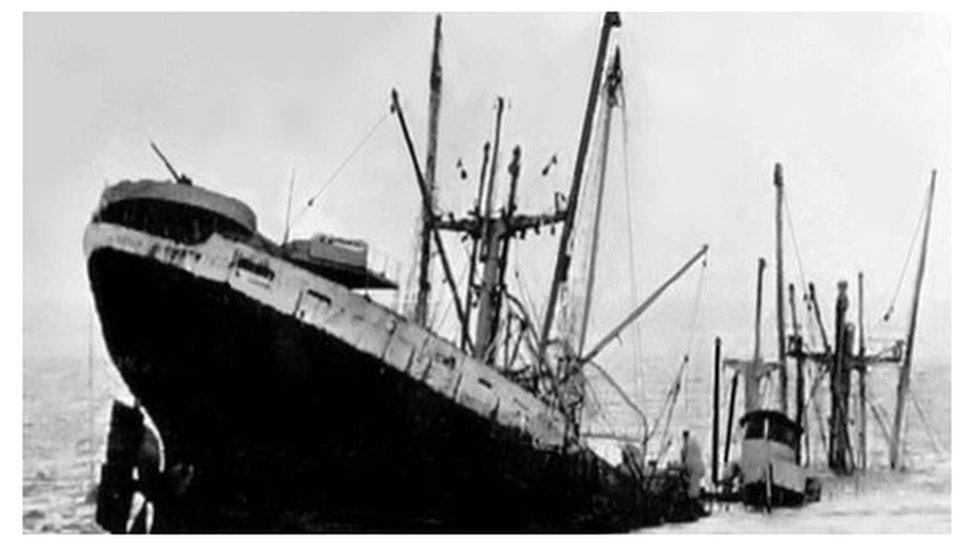Explosives-filled shipwreck has safety work delayed as objects found
- Published

Safety works to remove masts on the SS Richard Montgomery were delayed after 18 objects were found
A new, delayed timeline has been set for safety works on a shipwreck full of explosives after a new survey detected 18 "metallic objects" around it.
The SS Richard Montgomery beached along the Thames Estuary in 1944 eventually sinking with 1,400 tonnes of explosive cargo on board.
Decades later, government efforts began to try and remove the masts in case they fell onto the cargo and detonated.
The aim now is to carry out the mast removal work within the next year.
The surveyors also said that it was unclear exactly what the items were as they were buried in river mud but there were "no plans to remove them".
A Department for Transport (DfT) spokesperson said: "Our priority will always be to ensure the safety of the public and reduce any risk posed by the SS Richard Montgomery.
"We commissioned experts to carry out vital surveying work to the wreckage.
"Based on their findings, we are revising our initial timeframe and are updating our strategy to remove the ship's masts in the safest manner possible."
The ship which grounded on a sandbank near Sheerness, Kent in World War Two is decaying.
There is a remote but serious risk that if the cargo explodes a tidal wave could surge towards the Kent and Essex shorelines and onwards to the capital's Thames Barrier.

The masts of the SS Richard Montgomery can be seen above the water line and from the shore
Safety work was initially announced in 2020 and planned for June 2022 to minimise the risk of a detonation but this was delayed.
As a result of this latest discovery, transport officials are now considering how best to reconfigure the department's plans by finding a different way to remove the masts.
This will require further detailed survey work to assess the wreckage, before the DfT draws up a revised operational plan with contractors to remove the masts.
While the wreck is monitored and is subject to an exclusion zone, it is not far from the main shipping lanes into the capital and there are concerns about further degradation and increased risk as time passes.

If the cargo explodes, there could be a minor tsunami, according to one expert in risk management
Professor David Alexander, from University College London, is an expert in risk and disaster reduction and has studied the SS Richard Montgomery in detail.
He previously told BBC London: "A top event is all of that goes up and there's an almighty blast... and a huge column of water and debris and stuff.
"And we still have analogues of that from around the world where that has happened in the past, so it's not a totally unforeseen event."
The risk to nearby infrastructure could be on the scale of "a minor tsunami" in the worst case scenario, he added.
Prof Alexander thinks the authorities should try to remove the explosives, although he admits the work would not be cheap because "there's only one company in the world that could do that" and it would "probably need robots".
He said: "You'd certainly need enormous care because the structure of the ship is disintegrating at an accelerated rate.
"I think over the last 77 years the government has thought to itself 'well, the longer we leave it, the safer it gets'.
"It appears if you talk to experts in explosives, that is the opposite of the truth."

Follow BBC London on Facebook, external, Twitter , externaland Instagram, external. Send your story ideas to hellobbclondon@bbc.co.uk, external
- Published9 May 2022

- Published4 June 2020

- Published30 October 2017
